We get a lot of questions at Fort Clatsop. Here are some commonly asked questions and their answers, courtesy of our amazing park rangers!
From LCNHP Ranger Alicea Powell:
Aside from where are the bathrooms . . . I think the most common question is about why the roof is slanted in. The design is based on military fort design of the time. The slanted roof allows visibility of anything or anyone trying to sneak in on you.
Maybe not quite a question but more of a conversation starter is when people say, “Wow, you have such a fun job.” And yes, we do have quite a bit of fun. It is also thought provoking because I did not set out in my life to become a park ranger, and when thinking about how I ended up here, it just goes to show that however much you try to plan out your life, there are still fun surprises.
Another common question is if Lewis or Clark was the father to Sacagawea’s baby. French Canadian interpreter, Toussaint Charbonneau, was the father of Sacagawea’s baby, Jean Baptiste Charbonneau, who was only a few weeks old when the family joined the Expedition at Fort Mandan in 1805.
From LCNHP Ranger Matt Hensley:
Visitors sometimes ask what happened to the horses used by the Corps. Some horses were traded and others were left in the care of the Native American people that the Corps encountered along the way. According to the journals, a few dozen horses and one mule were branded and then left in present-day Idaho with the Nez Perce on the westbound segment of the journey, until the Corps retrieved them on the return trip.
From LCNHP Ranger Bill Millar:
“Where did they go to the bathroom?” is an unusual question that has been asked. Although there are no references in the journals or other historical documents, it is possible that at Fort Mandan and Fort Clatsop the location of the sinks (toilet holes dug into the ground) was based on Baron Von Steuben’s Blue Book, which dictates that sinks were to be located 100 paces from the camp or fort. Von Steuben was a Prussian Army officer who volunteered to come to the American colonies and serve as inspector general for the Continental Army during the American Revolution. His book, entitled Regulations for the Order and Discipline of the Troops of the United States but often referred to as the Blue Book, became the standard U.S. Army drill manual through 1812.
From LCNHP Ranger Debbie Kaspar (with additional info from Chris Clatterbuck, LCNHP Chief of Resource):
People are awed by the trees and often ask if the trees around the fort are the same trees that were here at the time of Lewis and Clark. The short answer is no. The huge Sitka spruce near the fort were not present when the Oregon Historical Society acquired the land in 1901. The Corps of Discovery cut down several of the smaller trees in order to construct Fort Clatsop and also for firewood during its 1805-06 winter encampment. What is known about the site in ensuing years is based on scant accounts from visitors and homesteaders. The original fort began to disappear almost immediately after the Corps left in 1806, and the area soon became overgrown with vegetation and trees. Most of the forest around the Fort Clatsop site was logged and milled between 1851 and 1854 by William M. Moore. Brothers Carlos and Franklin Shane, who lived at the site around 1850, also cleared land for farming and to plant an orchard. William Hampton Smith, who married into the Shane family, fell trees to build a house near the fort in 1872 and to create charcoal to sell in Astoria. Also during the 1800s, more trees were removed around the fort to clear land for planting potatoes and extracting clay.
From LCNPA Executive Director Debbie Wilson (as shared by a former park employee):
“When do the deer turn into elk?” You are on your own to answer that one.
